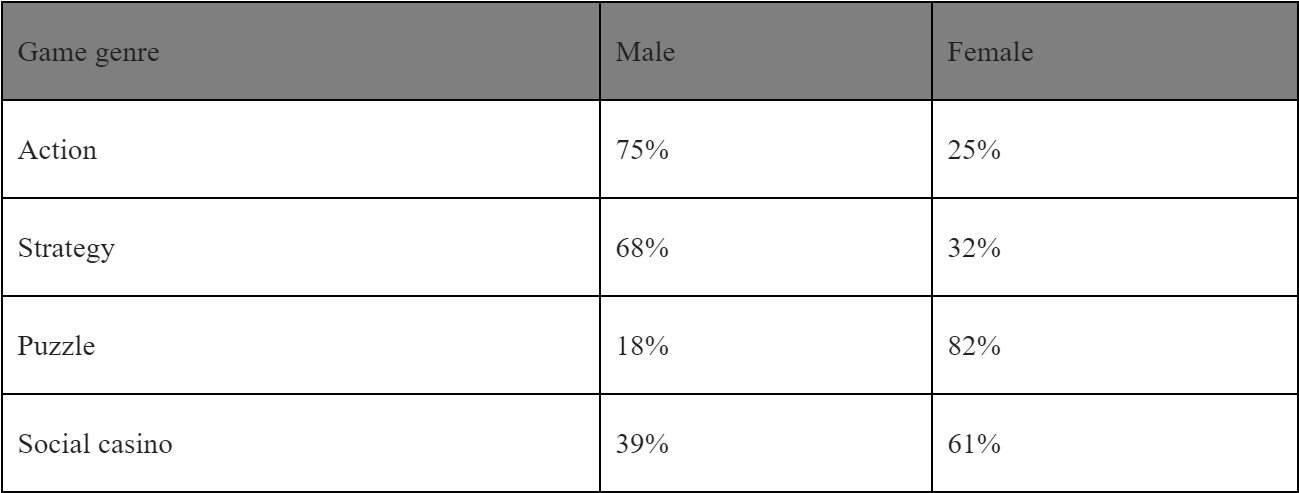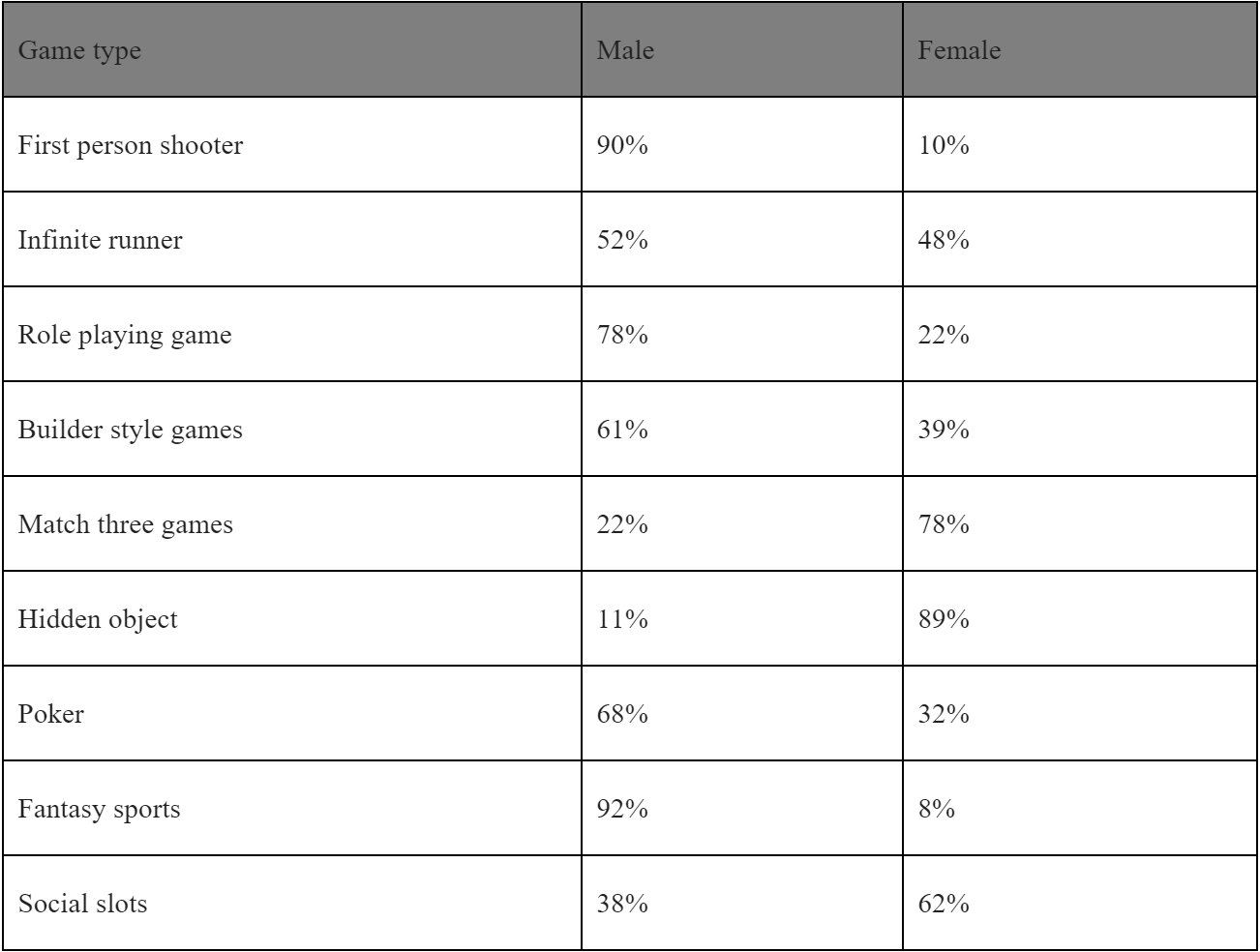One of the fascinating things about the mobile platform is that it’s got such a different audience from the rest of gaming, namely that the majority of players are women. EEDAR reported last year that 55% of mobile players are women, compared to 45% on handheld and 40% on console. Also, Flurry data seemed to indicate that at least for games that they tracked, women spent more than men. But what’s also fascinating is that the types of games that men and women are playing are so different. Analytics and marketing firm deltaDNA sent over some data on the gender balances in different genres in the games that they track, and there’s some interesting data to get out of it. Here’s the data on four broad categories:
And here’s some data broken down into further categories. Clash of Clans (Free) clones would fall into the “builder" genre, for example.
First, the question of “How did the chicken cross the road" or “what would you do if a giant monster was chasing you" appeal to men and women pretty equally, as infinite runners have a 52/48 male/female split. Flurry’s earlier data seemed to indicate that more women played endless runners than men, but not by any particular margin. Trends could have changed, but the possibility also exists that the difference between the two sets of data is within the margin of error, or even just the games on deltaDNA and Flurry’s platforms report different data. But it does show that there’s basically a balance, as other genres’ gender balances compare similarly.
But is the gender split between men and women in particular genres a chicken and the egg scenario? Namely, are some gender splits due to marketing rather than any kind of innate preference? For example, compare poker and slots – men prefer poker, women prefer slots, according to deltaDNA data. But there’s definitely interest, no matter how you shake it, in gambling in general, but is this due to how these genres are presented and sold to people? Are slots games designed and marketed particularly to appeal to women, and poker games to men, when in a vaccuum there might be a less-exaggerated split, or equal split? The data that deltaDNA sent over seemed to indicate that most other genres have some kind of notable split one way or the other for men vs. women.
Meanwhile, you look at something like the 90/10 M/F split for first-person shooters, and wonder if there’s a real possibility for some enterprising developer to make a game that does appeal to women. After all, women make up two-fifths of console players, and those systems are dominated by genres like the FPS. Could something like a Splatoon-type game, away from dark and gritty military and sci-fi themes, be a potential money-maker on mobile, to people who might enjoy the aspects of these genres, but not the themes? It’s not a crazy suggestion – think of people that enjoy military FPS games but not sci-fi ones. Make and market something outside the box properly, and perhaps you could get a huge audience with not just the traditionally-male audience, but a nice chunk of female players as well.
Similarly, could more traditionally-masculine match-3 games be a possible undervalued market? Time to make a match-3 game where you match up cans of different flavors of Mountain Dew, eh? It’s the next billion-dollar mobile game! Hidden object games being being such a woman-dominated genre is fascinating, too: I’d be interested to see the demographics on something like The Room 3 ($3.99) and its buyers. But maybe free-to-play hidden object games could be positioned in such a way to appeal to more male players, without losing the female audience?
Whether gender differences and preferences sold by marketing actually exist and are sold because they’re real and exceptions were tested and didn’t work, or are an illusion created and sustained by marketing firms is an exercise for the reader, and perhaps an army of sociologists.
Still, you could spend a lot of time trying to track down how this all shakes out – the important thing is that you have a platform in mobile where the gatekeepers don’t exist. Where there are games for everyone, thanks to the opening up of the distribution channels, and the placement of capable gaming devices in the hands of even non-gamers. But as time goes on, and potentially as more console and PC core gamers shift to mobile, how will the demographics shift? This topic is extremely fascinating.

